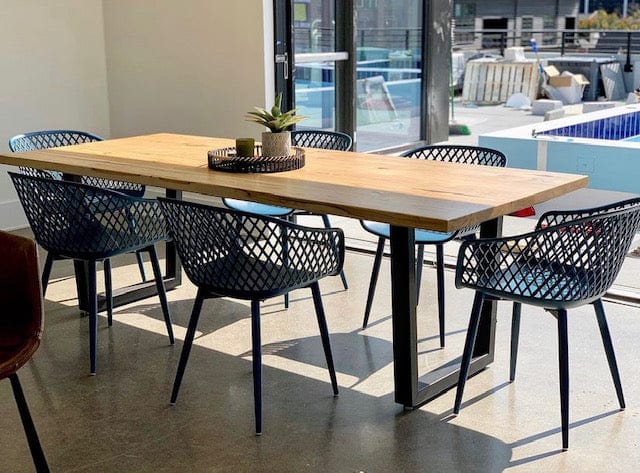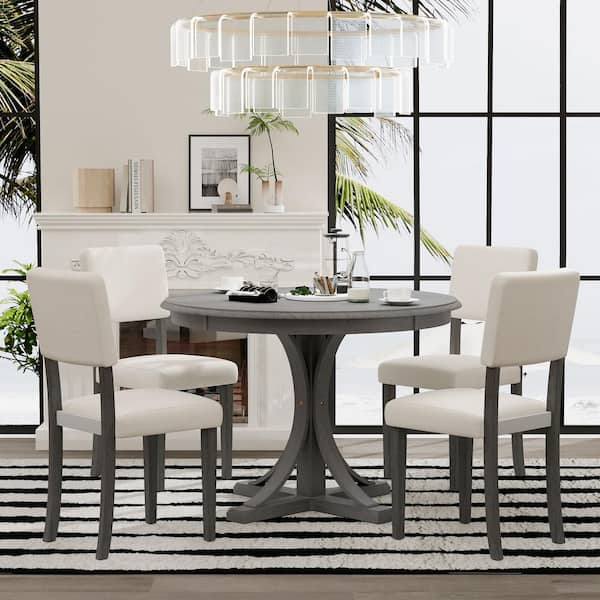Just How to Pick the Perfect Dining Room Table Legs for Your Home Design
Selecting the perfect dining area table legs is a nuanced procedure that needs cautious consideration of numerous components, including your area restrictions, aesthetic choices, and functional requirements. The interplay in between designs, dimensions, and products can dramatically affect the ambiance of your eating area, making it important to approach this choice systematically.
Assess Your Dining Room
Examining your dining room is important for selecting the right table legs that enhance both aesthetic appeals and functionality. Begin by gauging the dimensions of your eating area, consisting of ceiling height, flooring area, and closeness to other furnishings. This information will certainly help figure out the suitable dimension and height of your eating table, which directly affects the selection of table legs.
Next, take into consideration the design and format of your eating space. As an example, an open-concept layout may take advantage of table legs that use aesthetic lightness, such as slender steel or acrylic alternatives. Conversely, a much more typical setting may require tough wood legs that provide a sense of permanence.
Assess the existing color palette and materials in your eating location. Balancing the table legs with these aspects produces a cohesive look that enhances the total style.
Inevitably, a thorough analysis of your eating area will guide you in making an informed choice, making sure that your table legs not only enhance the visual allure however also serve sensible functions.
Consider Your Style Preferences
When choosing eating space table legs, it is important to review your personal design preferences, as they significantly affect the general aesthetic of your eating area. Your choice of table legs can either enhance or contrast with existing décor, making it crucial to straighten them with your favored indoor style theme.
If your home leans in the direction of a contemporary visual, think about sleek steel or minimalist wood legs that offer a tidy, clean appearance. For a more conventional strategy, elaborate wooden legs with detailed carvings can include a touch of sophistication and sophistication. Industrial designs gain from durable, raw products such as recovered timber and metal mixes, reflecting a tough charm.
Furthermore, farmhouse and rustic designs commonly favor durable, beefy legs that evoke a feeling of heat and comfort. Alternatively, if your decoration is diverse, you could choose unique forms or a mix of materials to produce aesthetic interest.

Evaluate Product Options
The selection of product for eating room table legs plays a pivotal function in both toughness and visual allure. Common materials include wood, metal, and composite options, each offering distinct qualities that can influence the overall look and longevity of your table.
Wood is a classic choice, known for its warmth and versatility. Hardwoods like oak and walnut provide remarkable strength and can be finished in various stains to match any decor. Softwoods like ache are extra susceptible to dents and scratches, making them less optimal for high-traffic areas.
Steel legs, usually crafted from steel or light weight aluminum, emanate modernity and industrial charm. They are resistant and very long lasting to use, making them ideal for families with kids or regular events (dining room table legs). Additionally, steel can be completed in various shades, improving the customization opportunities
Composite products, such as MDF or laminate, offer price and diverse designs. While commonly much less durable than strong wood or steel, they can still supply a stylish look and are typically easy to preserve.
Ultimately, the product you choose need to line up with your lifestyle, aesthetic choices, and the degree of use your eating table will experience.
Determine Height and Dimension
Choosing the ideal height and dimension for your dining space table is important for both capability and comfort. The common height for dining tables commonly ranges from 28 to 30 inches, permitting ample legroom for a lot of people when seated. Nevertheless, it is essential to consider the measurements of your dining space and the sorts of chairs you intend to use.

Additionally, think about the percentages of your dining-room. A larger table in a large area can produce a grand atmosphere, while a smaller table works well in more intimate settings. Ultimately, the right elevation and dimension will certainly balance with your general decoration and improve the dining experience for you and your guests.
Explore Customization Possibilities

In addition, the style of the legs can be customized to fit numerous designs, such as rustic, modern, visit site or commercial. Conical legs can evoke a mid-century modern-day feel, while beefy, block-style legs may reverberate with conventional or farmhouse style.
House owners can also check out shade surfaces, from all-natural wood discolorations to paint, enabling them to match or comparison with the tabletop and bordering decor.
Additionally, leg height can be gotten used to suit particular seating setups or personal preferences, boosting both comfort and performance.
Last but not least, distinct decorations, such as makings or decorative braces, can better personalize the table legs, making the eating experience not simply a declaration yet a meal piece in the home. By thinking about these customization options, house owners can develop a dining-room table that really shows their originality.
Conclusion
Selecting the suitable dining-room table legs requires cautious consideration of numerous variables, consisting of the dimensions of the dining space, style preferences, material toughness, and wanted elevation. Customization options even more improve the capability to accomplish a natural visual that enhances the total style. By methodically reviewing these components, home owners can ensure that the chosen table legs not just accomplish useful needs yet additionally add favorably to the dining experience and atmosphere of the home.
Choosing the optimal dining room table legs is a read what he said nuanced process that calls for mindful factor to consider of different aspects, including your space constraints, visual choices, and functional requirements.Evaluating your dining space is crucial for picking the right table legs that match both looks and performance.When identifying size, gauge the location where the table will be placed to guarantee it fits easily, allowing for at the very least 36 inches of clearance around the table for simple movement. A bigger table in a large area can create a grand setting, while a smaller table browse this site works well in even more intimate settings.Picking the excellent dining room table legs calls for careful factor to consider of different elements, consisting of the dimensions of the eating area, style choices, material longevity, and preferred elevation.
Comments on “Why Dining Room Table Legs Are Crucial for Your Table’s Stability”